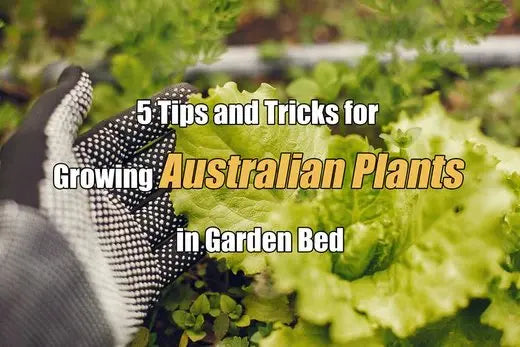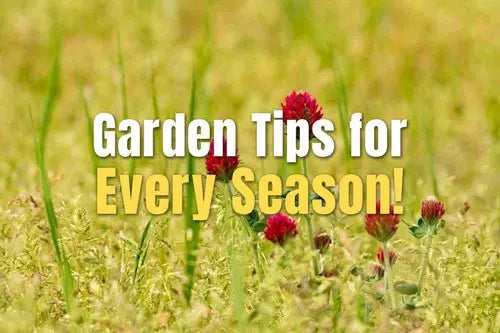4 Tips for Growing Flavorful Tomatoes in Raised Beds
No one can refuse to try a freshly picked tomato. It is worthwhile to plant at least one tomato plant in your metal raised garden bed, or even on a window sill, because it will satisfy your palate and soothe your soul when you taste it.
Tomatoes grow best in soil temperatures ranging from 61°F to 95°F, with plantings 16-24 inches apart. From sowing to harvest, it takes 8–17 weeks. Asparagus, chervil, carrot, celery, chives, parsley, marigold, and basil are good companion plants, while growing away from rosemary, potatoes, fennel, and cucumbers.
Tomatoes Can Be Grown in the Winter in Usa-Zone 10b
Tomatoes are a particularly sun-loving plant. It can also be grown in several seasons of the year. For most regions, tomatoes can only be grown in the spring and summer. And in the fall, when the weather becomes colder, they are not suitable for growing in most regions. But USA zone 10b is an exception. In this region, tomatoes can be grown in January, February, March, April, September, October, November, and December. So, in zone 10, people can eat fresh tomatoes all year long at all four levels.
Tomato Growing Tips
Growing tomatoes for the first time may appear to be an easy way to get high yields for a novice gardener, but you may be concerned about the roundness, uniformity of size, and taste of your tomatoes. While growing tomatoes is undoubtedly a fundamental skill for an experienced gardener.

Tomato seeds selection
a. Use a fresh tomato
To grow more tomatoes, you can either use purchased or picked tomatoes to grow more tomatoes. Thinly slice the tomatoes (being careful not to lose the seeds in the flesh) and lay them flat in a container, about an inch apart. Once the tomato seedlings have grown steadily, select healthy seedlings to transplant into pots or garden beds.
b. Planting from seeds
Soak the seeds before placing them in a seed tray or pot, covering them with fine soil, wrapping them in plastic wrap, and placing them in a light location. Remove the plastic wrap after a week or so, water them thoroughly, and then select healthy seedlings to transplant into pots or garden beds once they have grown steadily. Soak the seeds for about 2 hours, then immerse them in hot water maintained at 113-122 °F for 15 minutes, and then soak them for another 4 hours without maintaining the water temperature, which can promote rapid rooting and germination and protect them from diseases.
Soil selection
Tomatoes prefer loose, fertile soil that is deep and has good air permeability and water retention. The best soil in the woods is humus soil. The leaves reveal the semi-rotten state of the best soil, which contains humus and field soil in a 1:1 ratio. If not, raised bed soil and potting soil are other options.

Transplanting
To transplant tomatoes, wait until the seedlings have three to four leaves before digging them out of the soil. When transplanting, move the seedlings with the roots to a new container or raised beds to avoid damaging the tomatoes' roots and allow them to easily adapt to the new soil, and then place them in a sunny location to grow.
Tips: When transplanting, remove the leaves from the bottom of the stems to help prevent the development of fungal diseases, as pathogens in the soil can easily splash onto these leaves.
The Four Steps to Growing Delicious Tomatoes

1. Fixing the branches
Branches and leaves must be fixed with wooden sticks after transplanting. When the tomato seedlings grow, the branches are tied to the sticks, and all the side branches and leaves that do not produce fruit are cut off so that the tomatoes can grow better.
2. Watering and fertilizing
Tomatoes can grow naturally in direct sunlight, but growing them in the shade is not beneficial because the temperature is significantly lower. Tomatoes should be watered once a day in the morning and fertilised every 20 days. When the tomatoes bear fruit, organic fertiliser should be applied once a month to make the fruit more tasty. Water frequently but sparingly during the fruit's growth period, and no water should accumulate in the garden beds. Watering can be reduced once the fruit begins to ripen to encourage the plant to concentrate sugar for better-flavored tomatoes.
3. Soil management
Tomatoes are a warm-loving fruit, so keep culture temperatures between 61°F and 95°F, soil pH in the 67 range for plant growth, and at least 11 hours of light per day to encourage their bud differentiation. Consider growing tomatoes in a metal raised garden bed in a greenhouse during the winter, preferably with artificial plant lights to ensure adequate light hours. Because the metal raised garden bed can absorb heat, which provides a warmer and more suitable soil environment for tomatoes.
4. Space between the tomatoes
Tomatoes typically need about 18 to 36 inches between plants. The number of tomato seedlings that can be grown in size 8x2, 8x4, 4x4 or 6.5x2 raised bed depends on the spacing you provide for each plant. Take 8x2 size bed as an example:
- If you are using the square foot gardening method, which is more space-efficient, you could fit 4 tomato plants in a 4x4 square foot area, with each plant having a spacing of about 2 feet in all directions.
- For a 2-foot-wide bed, allowing 18 inches between plants in a row, you could potentially fit two rows of tomatoes.
- If you allow 24 inches between plants, you would have room for one row. In each row, you could fit 4 plants if you gave each plant 18 inches of space (the total width needed per row would be 72 inches, which is less than the 8-foot length).
So, you could grow anywhere from 4 to 8 tomato seedlings, depending on the spacing you choose. Always remember that proper spacing ensures good air circulation, reduces disease risk, and allows the plants to reach full size without competing for resources.
5. Pest and disease control for tomatoes

a. Disease Control
Tomatoes are vulnerable to diseases like leaf mould and ulcers, which cause irregular spots on the branches and leaves and then spread, affecting tomato growth, fruit production, and possibly fruit failure. Gardeners should improve the growing environment for tomatoes by removing diseased branches and leaves, replacing mulch, and spraying with a bacteria-killing solution once every other week until the tomato branches and leaves recover.
b. Pest control
Tomato bugs, stink bugs, cutworms, and other insect pests that attach themselves to the leaves and branches of tomatoes, absorbing sap from the branches and leaves and corrupting the fruit, are common. Keep an eye on the growth status of your tomato plants and do a good job of physical prevention and control to control the root cause of pests ravaging your garden or garden beds when growing tomatoes. Manage tomato viruses in the home garden to ensure healthy tomatoes.
With the addition of these growing tips, it is easy for everyone to grow high-yielding tomatoes in their home garden.


